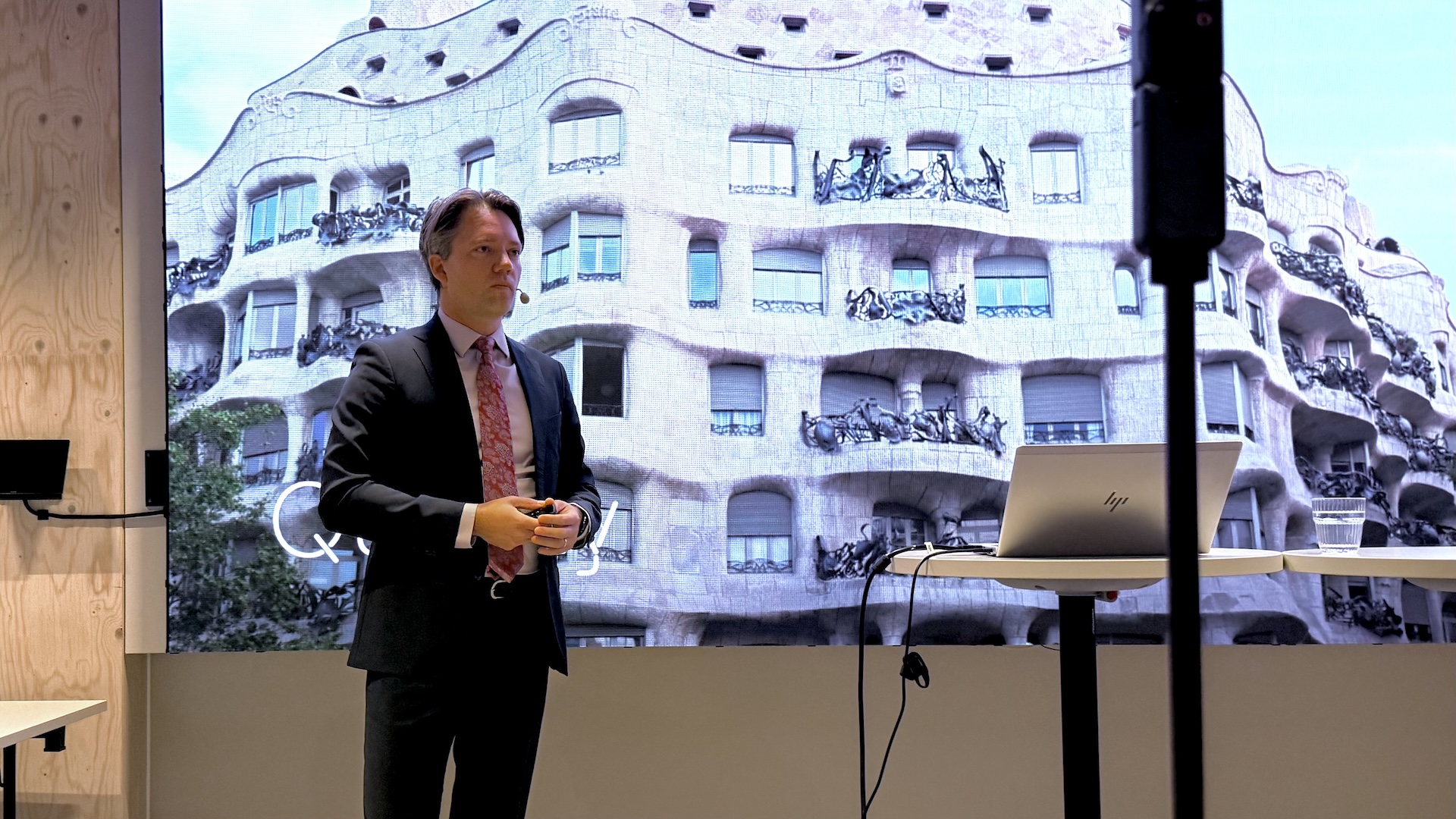Jaan Saar, Future Insight Group’s Chief Evangelist for BIM, delivered a keynote on what he thinks is the killer app for BIM at WDBE 2024 in Helsinki on October 3, 2024. You can watch my recording of his keynote at the end of this post or on YouTube.
Many remember Jaan as the Head of Digital Construction at the Estonian Ministry of Climate. Today, he’s a buildngSMART’s Board of Directors member and heads the EU BIM Task Group. During his five-year tenure at the ministry, Estonia developed digital building permissioning as part of the e-construction platform.
In other words, Jaan’s opinions on BIM bear a lot of weight.
The killer app
“The killer app means that it’s usually a software product or service that is so good, that is so valuable, that it actually drives the adoption of a whole platform or a hardware device or an ecosystem just because you want this one specific software feature,” Jan explained.
He mentioned the VisiCalc spreadsheet as the killer app for the PC. VisiCalc spurred the adoption of personal computers in businesses but was later overthrown by Excel. Desktop publishing was the killer app for the graphical interface, and email or the HTML language are killer apps for the internet. For the iPhone, it was the App Store.
Jaan said he honestly believes BIM-based, automated building permits are the killer app for BIM. It’s because, for the first time, people who make decisions and choices in the process get value from BIM, which has been a distant concept for them.
The arguments
Jaan argued that the BIM-based building permit process offers speed by cutting its lead time by 50%. In the future, over 90% (but not 100%) of the compliance checking tasks can be automated, further expediting the process.
Transparency is another benefit because you know what you’re checking, how you’re checking, why you’re checking. Jaan admitted that this is not an issue in Finland. He mentioned a potential project in Ukraine where transparency is a challenge.
“So maybe it’s not the speed they’re so much after, which is also nice. But for them, what is really the driver is having transparency because that’s a big problem in Ukraine and also in other countries,” Jaan said.
The third advantage is quality. Quality will improve when applicants have the tools to pre-check their designs before submission.
The movement has started
A recent PwC study for the European Commission shows that 57% of EU municipalities plan to implement BIM in their building permit systems.
“Around Europe I see that the tide is changing a bit, and we are starting to see a tipping point where really more governments and municipalities are doing this, and they’re starting their projects,” Jaan commented.
He emphasized the need for collaboration between the public and private sectors. Exploring what others in other countries have done is critical so you don’t reinvent the wheel. Jaan also advises using open BIM and open standards to ensure future-proofing.
The video
View the original article and our Inspiration here


Leave a Reply